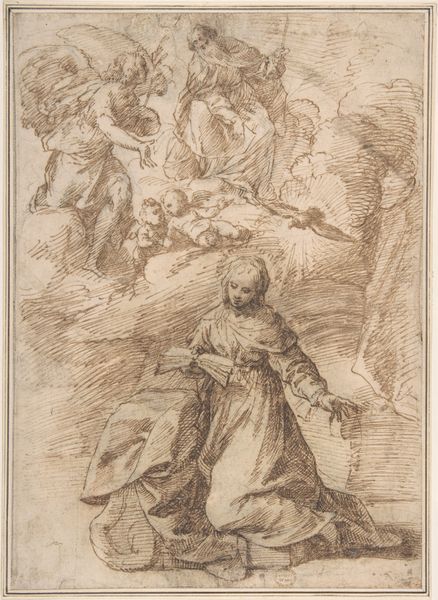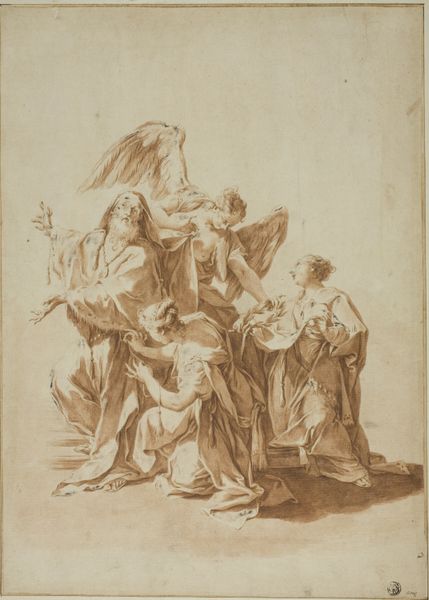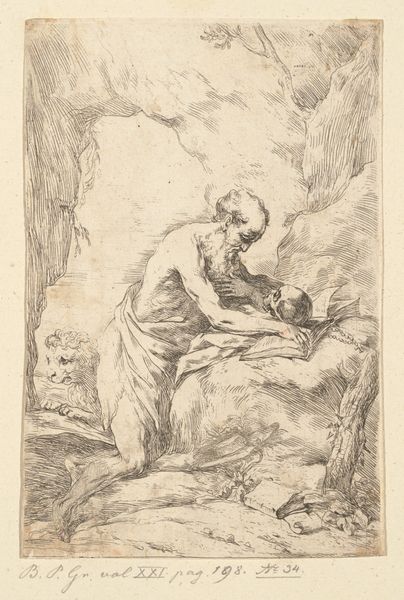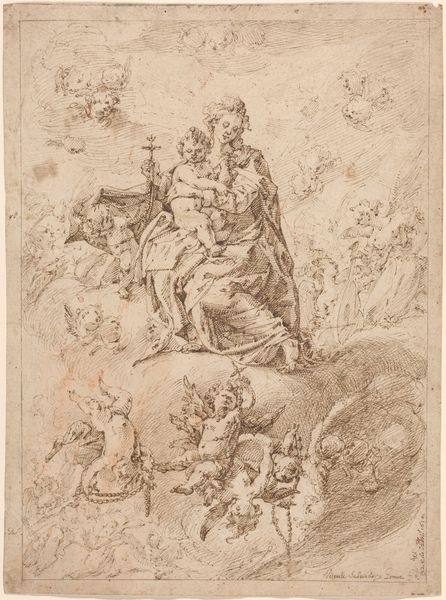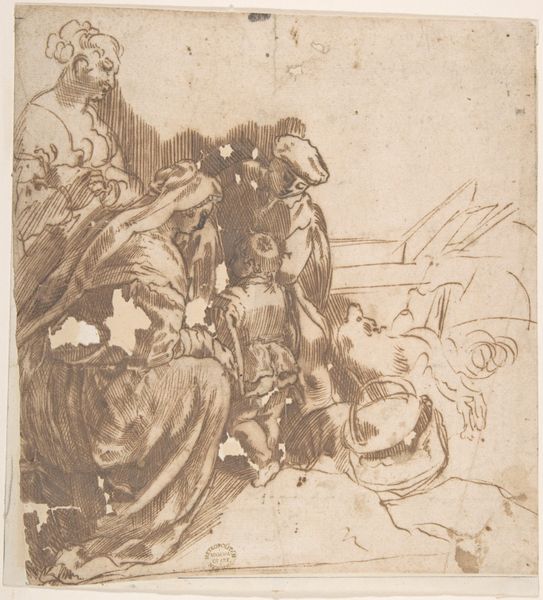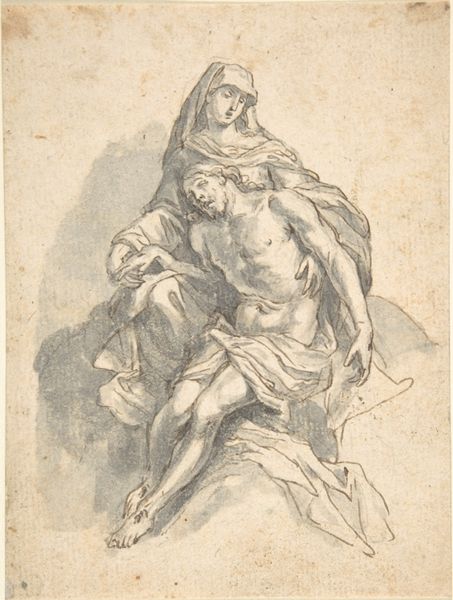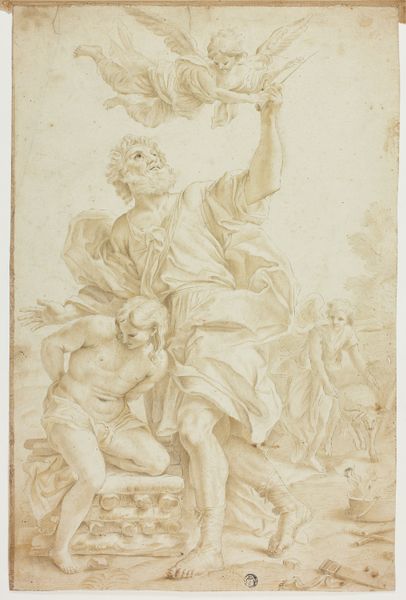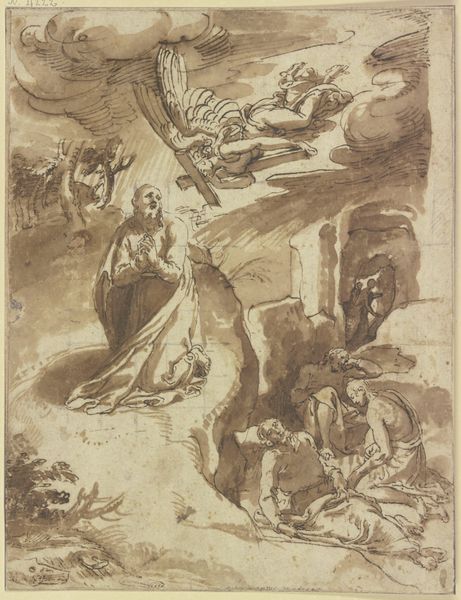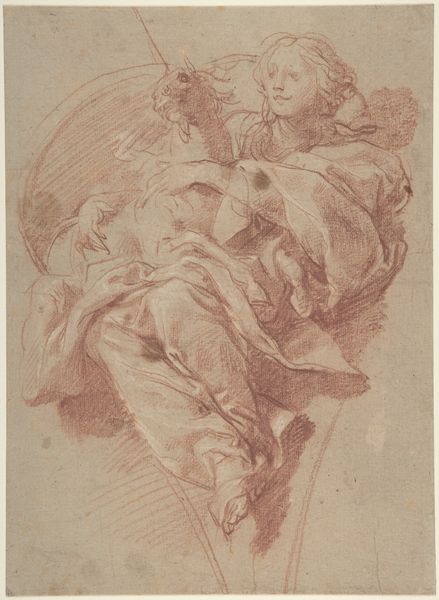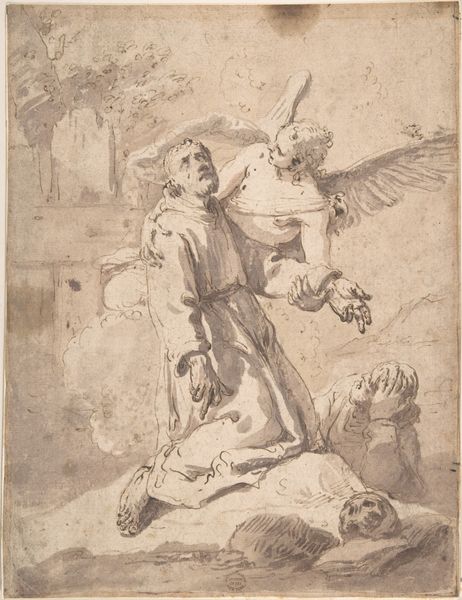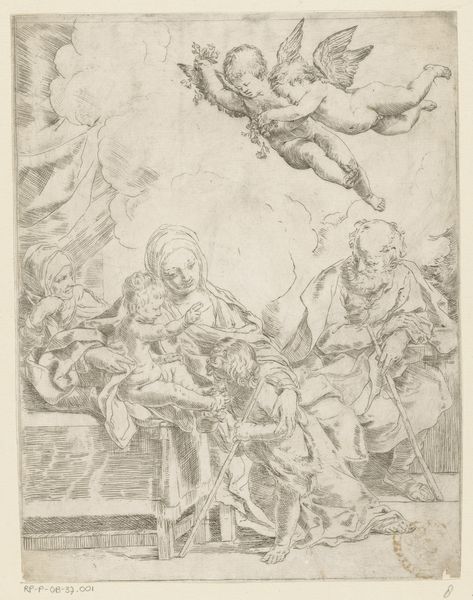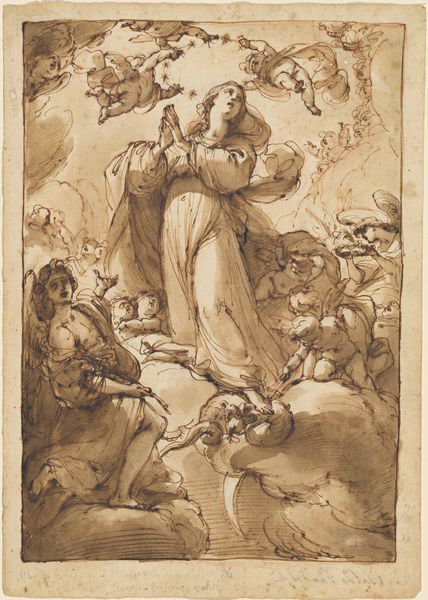
God the Father Seated on a Cloud, Flanked by Two Putti 1600 - 1700
0:00
0:00
drawing, print, ink
#
drawing
#
ink drawing
#
allegory
#
baroque
# print
#
figuration
#
ink
Dimensions: 6-1/16 x 5-1/16 in. (15.4 x 12.9 cm)
Copyright: Public Domain
Curator: Immediately striking, isn't it? There's an almost theatrical grandeur to it. Editor: Indeed. This is an ink drawing dating from the Baroque period, sometime between 1600 and 1700. While its creator is currently listed as Anonymous, it depicts "God the Father Seated on a Cloud, Flanked by Two Putti." You can view it here at the Metropolitan Museum of Art. Curator: I find the composition particularly interesting. God the Father is centrally positioned, dominating the visual space, but the two putti disrupt what could be a rigid hierarchy. Their presence humanizes the divine. It speaks to Baroque fascination with mixing the earthly and the spiritual. Editor: Absolutely. Consider the role of such imagery within the Church and society of the time. Representations like these solidified power structures, portraying God as a benevolent, yet unquestionably supreme, paternal figure. These images are propaganda just as much as they are spiritual art. Curator: Propaganda might be too strong of a word. I would argue that it offered, even reinforced, an aspirational idea. Looking at it today, however, I can’t help but consider its implications for societal structures—patriarchal, yes, but also what the cherubs’ whiteness can imply. It is exclusionary, a single perspective promoted over many, even here within a supposed ideal of divinity. Editor: The institutional forces at play here—the patrons who commissioned this, the audiences who were meant to consume its message. It's all interwoven. Curator: Exactly. While technically superb, such figuration necessitates deeper engagement. It's important to situate its narratives of divinity within power dynamics and historical narratives. Editor: Indeed, approaching works such as these require acknowledging the complex negotiations of art history. Considering context and purpose ensures balanced assessment. Curator: This piece offers a profound insight. How historical context and faith affect us and our idea of representation, both past and present. Editor: Precisely. It encourages dialogue with historical works but situates that within broader and ever more relevant cultural terms.
Comments
No comments
Be the first to comment and join the conversation on the ultimate creative platform.
